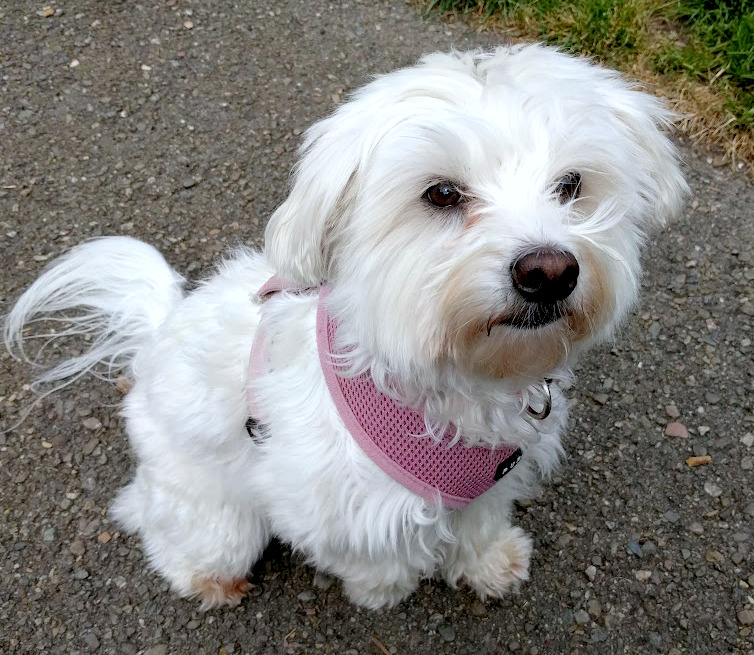How to Greet a New Dog: Not With A Hand in The Face

It's unclear when or why the advice originated to stick your hand out when you meet a new dog so they can sniff it, but the habit is so ingrained that even those of us who know better sometimes still do it reflexively. Please don’t. Dogs have a powerful sense of smell, and they can get all the information they need without you putting the smallest part of your body directly in front of the bitey end of an unknown dog.
In some cultures, including ours, a proper human greeting consists of a firm handshake and direct eye contact. But many cultures have very different and distinct greeting protocols, whether it's a kiss on one or both cheeks (Belgium and France, respectively), a bow (Japan), a head nod (China), or palms together with a bow (Thailand and India). In fact, too much eye contact is a sign of disrespect in many places (China), and shaking hands with people of the opposite sex is taboo in some Arab countries.
As with humans, canines also have their own protocols for polite greetings. Here are some tips for meeting a new dog, while respecting canine culture.
- Remember that just because a dog comes close to you doesn't mean they want to interact or be touched. They may be approaching simply to gather more information about you.
- Wait for the dog to approach you rather than stepping into their space.
- Do not extend your hands or arms as leaning over and reaching may be perceived as intimidating or confrontational. There is no need to offer any body part for sniffing.
- Stand sideways (so you are not facing the dog) with your arms hanging loosely and stay still while the dog sniffs you. Many dogs will circle as they investigate you. Don't freak out if a dog wants a whiff of your crotch; this is normal dog behavior.
- Avoid staring at dogs you don't know. Prolonged eye contact can be seen as a threat by dogs. Gazing lovingly into your own dog's eyes may give you both an oxytocin boost, but most unknown dogs will not appreciate eye contact with strangers.
- A dog who wants to interact with you will approach with a loose, wiggling body, a soft mouth, and a wagging tail. They may lean into you or nuzzle your hand with their nose.
- Most dogs do not like to be petted or patted on the top of their head. Instead, offer to pet them on the side of their neck or behind the ears.
- A dog may want to be touched and then change their mind. Saying yes to a quick scratch behind the ears doesn't mean you have free range to touch their bodies for as long as you like. Consent can be withdrawn at any time.
- Rolling onto their back and exposing the stomach is not always a sign that a dog wants a belly rub. It can be an appeasement gesture offered by scared or nervous dogs ("Don't hurt me, I'm not a threat").
- Watch for body language that indicates the dog does not want to be touched. Signs include turning the head away, shifting body weight back, freezing or standing very still, lip licking or tongue flicking, yawning, lifting a front paw off the ground, or showing the whites of their eyes.
Just because a dog is out in public doesn't mean it wants to interact with new people. That cute dog you are just dying to pet might be shy or scared or simply not interested in stopping what they are doing and getting pets from a stranger.
When I was pregnant, complete strangers would approach me and touch my belly without asking. This invasion of privacy was maddening. I am sure this is how many dogs feel about being fawned over by people they've never met.
Asking the dog owner, "Can I pet your dog?" may seem polite, but we really need to ask the dog - not the human - if they want to be touched. Dogs don't use words to communicate, but they tell us how they feel with their body language all the time (see pointers above). You need consent from the dog, not the owner.
My own German Shepherd does not accept petting from anyone outside our immediate family. I don't see this as a problem or something that needs fixing. He is aloof and reserved with strangers, which is fine by me. On the other hand, my Chihuahua welcomes touch from any and all people at all times. They are different individuals with their own likes, dislikes, and boundaries.
Dogs have a right not to be touched by people if they don’t want to be. It's your job to run interference and advocate for your dog, if needed. And it’s our collective job to show that same respect to new dogs we may meet on the street - with proper canine protocols, not with a hand in the face.

